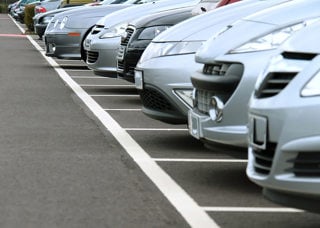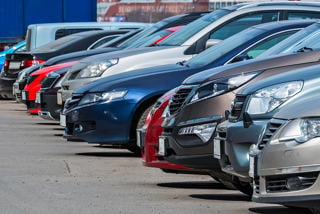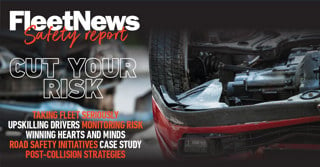Fleet managers are being advised to tighten controls on the grey fleet after a number of reviews by the Energy Saving Trust found drivers have used cars that are more than 70 years old for business journeys.
The oldest car used has been an Austin 7 from 1934, which the EST discovered during a fleet review around five years ago.
In the past three months, the EST has also found a car “on the wrong side of 70 years, doing 2,000 business miles a year”, according to Karl Anders, fleet consultant at the EST, who was speaking at Brake’s recent Fleet Safety Conference.
In some instances, public funds are being used for classic cars. Twelve 1960s Triumph sports cars were being used at one NHS organisation.
The NHS fleet manager wanted to reduce the pence per mile reimbursement rate for grey fleet drivers and increase the number of pool vehicles, and turned to the EST for help.
“The fleet manager said, ‘the problem is we’ve got a really noisy bunch of drivers who are arguing that the amount of money they can reclaim won’t meet the cost of running their private vehicles’,” said Anders.
It turned out that the “noisy” drivers were the Triumph owners.
“That kind of stuff is hidden,” said Anders. “The organisation had no idea it was there. It has tightened up its policies now.”
When the EST has checked the registrations of grey fleet vehicles with the DVLA it is “quite common for a quarter or a third of them to be pre-2001”, according to Anders.
“We often feedback ‘oh, by the way, you have 35 cars registered in the 1980s and another 25 registered in the 1970s’.”
This means the cars pre-date the CO2 reporting system. But it is not just the CO2 emissions of these vehicles that should concern fleet managers.
Companies have the same duty of care responsibilities for grey fleet drivers as they do for company car and van drivers and many of the private vehicles being used will lack safety technology such as ABS and ESP.
The consequences of not managing the grey fleet are legal risks, higher costs and a higher carbon footprint as well as the potential damage to the organisation’s reputation.
Businesses should consider specifying a minimum Euro NCAP rating for grey fleet vehicles, along with other measures.
Even organisations that have good policies for owned, leased and rented vehicles can be “shoddy” when it comes to their grey fleet, said Anders.
An organisation the EST recently worked with had several thousand grey fleet drivers but did not know how many miles they were doing, what vehicles they were using or how much it was costing.
“It is frightening,” Anders said. “If you don’t know what these vehicles are, how can you manage them?”
One city council thought that the 10 million miles its company car fleet travelled was a problem, but the EST discovered the council’s grey fleet was doing 30 million miles.
Anders also highlighted a private company that sells to the NHS.
When the EST performed a green fleet review a few years ago, its fleet’s average emissions were 140g/km. In a recent review this had fallen to 120g/km.
The company thought it had done “a brilliant job” in lowering emissions, but when the EST investigated it found hundreds of drivers had opted out of the company car scheme and taken cash because the company had introduced a generous cash allowance scheme.
Many sales people had used the cash to buy Porsche Cayennes, which can have average emissions of more than 200g/km.
According to EST research, average CO2 emissions for grey fleet vehicles are just under 170g/km (compared to just under 150g/km for company cars), while the average age of a grey fleet vehicle is just under seven years. The average age of a company car is two-and-a-half years old.
The differences between company vehicles and grey fleet are getting worse, according to Anders.
In some organisations the average grey fleet age is now more than nine years.
He recommended that organisations start managing their grey fleet by getting to grips with data for these vehicles, putting robust policies in place, having alternatives to the grey fleet and then managing and promoting them to staff.
The business case
Businesses need to work out how their pence per mile rate for grey fleet drivers stacks up against alternatives, such as daily rental and pool cars, in order to work out the business case.
“It’s sometimes cheaper to rent a car for the day than pay the pence per mile,” Anders said.
However, he pointed out that “no two business cases are the same”.
A private sector organisation is likely to reimburse at the HMRC recommend rate of 45ppm for the first 10,000 miles and 25ppm thereafter, while public sector organisations might use National Joint Council rates of up to 60ppm (for the first 8,500 miles) or the NHS Agenda for Change rate of 67ppm (up to 3,500 miles, 24ppm thereafter).
Those with the highest rates and highest mileage stand to make the greatest savings from controlling and reducing the grey fleet.
Grey fleet controls to put in place
- Maximum vehicle age
- Maximum CO2 emissions
- Minimum Euro NCAP rating
- Annual driver licence checks
- Business use insurance checks
- Service and maintenance records and MOT checks




















Roland Waters - 17/06/2014 12:59
Sound like a Hopuse of Commons MP claim for mileage/fuel costs! But hey, we all know how MPs claims and payments work - unique and unavailable to every other person working a real unsubsidised job?